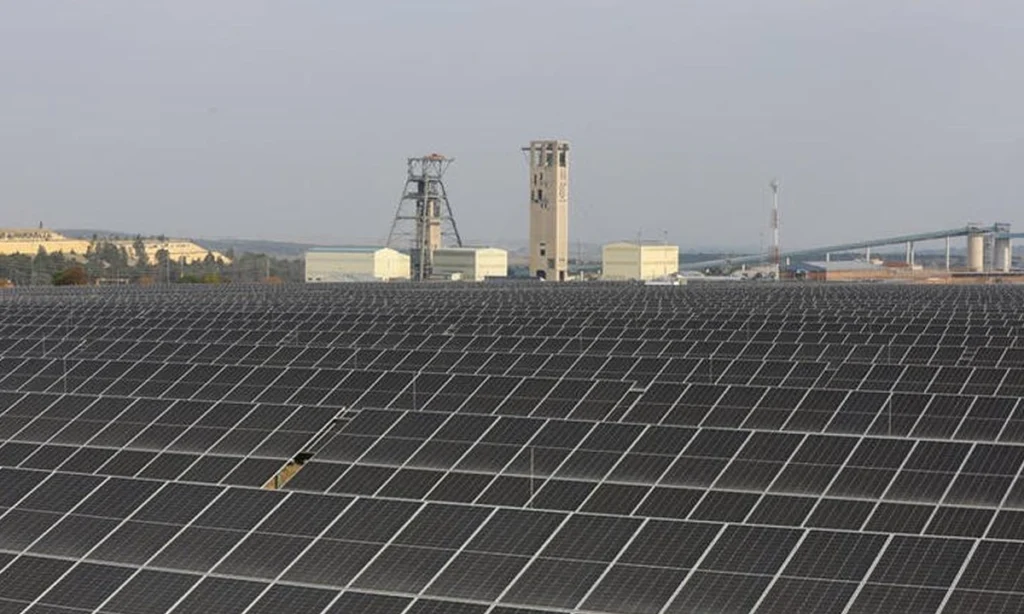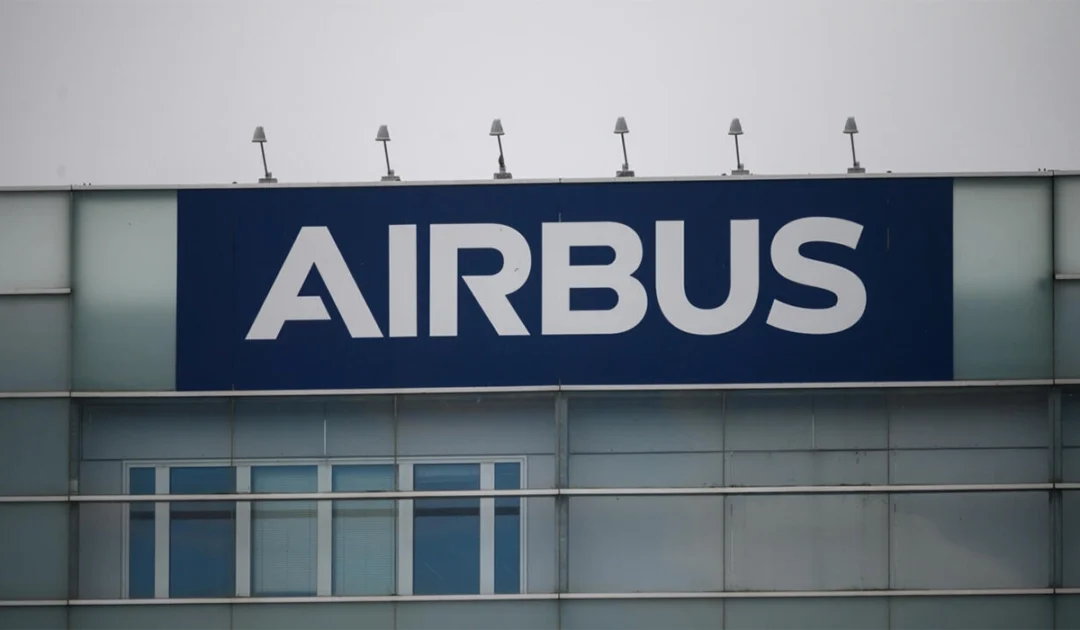- Web Desk
- Oct 28, 2025
Small solar city emerges in South Africa’s coal heartland
-
- Reuters
- Oct 08, 2025

ERMELO: As dusk descends on South Africa’s coal belt, a stretch of land scarred by decades of mining now flickers to life as dozens of solar street lamps light up Nomzamo Agri-Village.
Despite this mini solar wave sweeping the settlement, coal still keeps many in work, warms their homes in winter and cooks the dinner, even as locals cough up lung fulls of grey smog.
Now though, things are slowly changing.
As one of the world’s largest coal exporters, South Africa has embarked on a plan to wean off polluting coal and embrace green industries that create desperately needed jobs.
Nearly every Nomzamo household has a solar brick – a stackable lithium-ion battery charged by the sun – to power their lights and cellphones.
And despite numbering just 412 households, Nomzamo sees its initiative as the start of the country’s big, green shift.
“We have begun the transition,” said Nelly Nkosi, a 40-year-old resident and women’s officer with the Khuthala Environmental Care Group, the local charity behind the solar initiative.
“The coal will eventually run out and then more people will be forced to use solar, so the sooner people adapt the better,” Nkosi said from her corrugated-iron home.
JUST ENERGY TRANSITION PLAN
South Africa designed a Just Energy Transition Plan (JETP) – a roadmap to shift to cleaner energy while creating green jobs, with funding committed by wealthy international governments.
International partners have pledged $13.74 billion to Phase One of the transition, according to the Just Energy Transition Project Management Unit (JET PMU) that oversees the plan.
Read more: US solar panel makers seek tariffs on imports from Indonesia, India
The United States withdrew funding to the JETP in March.
Another $71 billion – or thereabouts – is needed to realise the 2023-2027 strategy, the JET PMU told the Thomson Reuters Foundation.
This feeds into South Africa’s commitment to cut emissions to between 350 million and 420 million tonnes by 2030, down from 442 million in 2020, on the way to net zero.
But progress has been slow and development experts say many more community-run, renewable energy projects – projects like Nomzamo – are vital if decarbonisation is ever to work.
“You can call us a solar city, a small one, but we are growing,” said Zethu Hlatshwayo, Khuthala’s spokesperson.
But while the solar bricks have saved residents hundreds of rands per month that they would have spent on paraffin, candles and batteries, residents know the bricks are not enough to meet all of their energy needs.
“We say that half a loaf of bread is better than no loaf,” said Nkosi, referring to the solar energy supply.
“But we want government to empower more people to use more renewables,” she said as her old coal stove hummed to life.
THE BIRTH OF NOMZAMO
Nomzamo Agri-village was founded out of urgency.
In 2016, a vicious storm flooded the local river in Ermelo and left hundreds of residents homeless.
Philani Mngomezulu, head of Khuthala, knew of open land – an unrehabilitated open-pit coal mine spanning an estimated 60 hectares – and won signoff from the mayor to relocate the newly homeless families.
Overnight, the Khuthala leaders became town planners, designing a blueprint for their future community and even setting aside small backyards for residents to grow food.
As the settlement slowly grew, Khuthala fenced off dangerous entrances to old mine cavities; Mngomezulu estimates at least 15 people, mainly children, have fallen to their death.
Three years ago, Khuthala leaders were approached by a local charity, GreenCape, to launch a green energy project that would be funded by New Zealand, France and Denmark.
“We work in areas where the state or government is not likely to be able to provide services,” said Reshmi Wolvers, an expert on social impact with GreenCape.
She said their role is temporary after which the community will fully own the project. Their aim is not to compete with government but simply act as a stopgap.
“The reality is that there’s a backlog of 1.6 million households at the moment that don’t have access to the grid and there’s probably an eight- to 15-year waiting period,” said Wolvers.
GreenCape began working in Nomzamo in March 2023 – two years later and more than 400 homes now have solar bricks.
“It’s a marvel,” said Tebogo Mogakabe, the municipality’s environmental services manager. “Copying this model elsewhere in the country would maximise our constrained budget.”
BYE-BYE COAL?
The project began by finding out what energy the residents needed – and what they could afford, with GreenCape training more than 70 residents to collect this data from Nomzamo households.
Food alone was costing some families more than half their income – no fridges meant no cheap, bulk buying of perishables.
Almost 90 per cent of residents earn below 3,500 rand ($203) a month, with paraffin and candles consuming roughly half of that.
“I also use an illegal electricity connection,” said one resident, who asked to remain anonymous, pointing to a wire suspended from the roof of their shack, blackened by coal smoke.
“But if our solar grows, we won’t have to,” they said.
ILLEGAL ELECTRICITY CONNECTIONS
Illegal connections account for roughly 70 per cent of the country’s electricity revenue losses, according to the country’s public electricity utility, Eskom.
While these solar bricks are not connected to the country’s grid, community run-renewable projects could in future feed surplus power back into the state grid, said Janet Cherry, professor of development studies at Nelson Mandela University.
This could – in theory, at least – help residents earn a little extra from their power production, she said, though municipal regulations and inaction remain big roadblocks.
South Africa wants to hit 33 per cent renewable electricity by 2030.
Currently only 13 per cent comes from solar and wind, according to energy analysis site Ember.
For now, Nomzamo residents spend 80 rand per month on their solar setup, subsidised by the three sponsor nations, kit which they will own after one year.
Sixty double street lamps and 10 solar-powered communal chest freezers, which residents can use for a small, 30-rand monthly fee, are also part of the solar roll-out.
Nkosi is saving on candles, food and paraffin.
But her 50-watt solar panel and brick is not enough to power a washing machine, now abandoned at her sister’s, plus she worries her food will vanish from the communal freezer.
Less worrisome though is walking local streets at night.
WOMEN FEELING SAFER
“Us women feel safer… which is a big deal in South Africa where gender-based violence is so common,’ said Nkosi, energised by the breadth of change underway.
“We grew up hearing mine blasting from our clasrooms…living with cracks in our homes, collecting coal while we walked home from school. We thought this was normal until now,” said the 40-year-old, currently unemployed.
Fellow resident Lindokuhle Malaza, a 23-year-old trained to install the solar bricks, said the project had made him dream of starting his own solar installation company one day.
“I want to see things improving in Nomzamo: bigger solar bricks, sewage, proper housing and running water. I want to be a part of it,” he said.
SET THE BAR HIGHER
Yet coal is still trucked into Nomzamo by the many artisanal miners who call the solar city home.
Children haul wheelbarrows full of coal to their mothers to cook dinner. Small black mounds decorate backyards turned makeshift coal markets.
GreenCape is realistic about solar living alongside coal for now – they feel the future of energy is firmly on their side.
National coal power generation fell from 90 per cent of 229.8 terawatt hours in 2014 to 82 per cent in 2024, according to the think tank Ember, and solar rose from 0.4 per cent to 8 per cent in the same period.
“What’s nice about the technology is that it’s stackable,” said Wolvers.
As savings grow, residents can buy ever more bricks and literally stack them on top of each other, like solar building blocks.
Yet some researchers say that drip-drip model falls short.
Cherry from Nelson Mandela University said many small-scale projects do not meet “very fundamental needs” – be it cooking or heating water – and that women bear the brunt of the shortfall.
Municipalities were further failing residents by not providing basic services such as street lights, she said, while regulations hamper the potential of many projects.
MORE AMBITIOUS AND IMAGINATIVE
“We have to be much more ambitious and imaginative,” said Cherry.
She wants mass investment in green jobs – in “agriculture, construction, transport and mining of green minerals” – under a new, eco-Industrial Revolution owned and led by communities.
Khuthala, the charity behind the project, says solar is just one part of its bigger, long-term strategy for Nomzamo.
With the nearby Camden coal plant set to close in 2030, Khuthala plans to train thousands of ex-miners in newer sectors such as mine rehabilitation, green hydrogen, plumbing and welding.
“We are contributing daily to lowering our energy footprint and we will keep finding ways to do that,” said Mngomezulu.
“We are all responsible,” he said.





